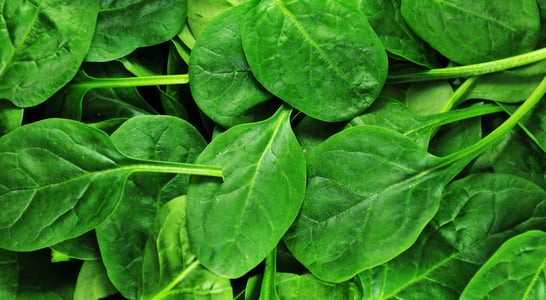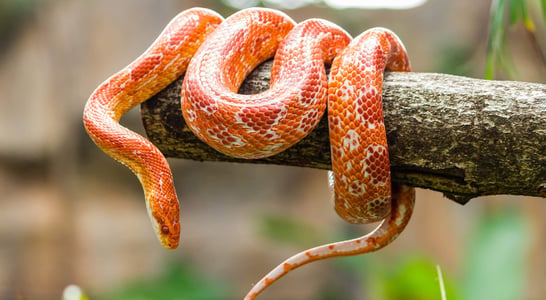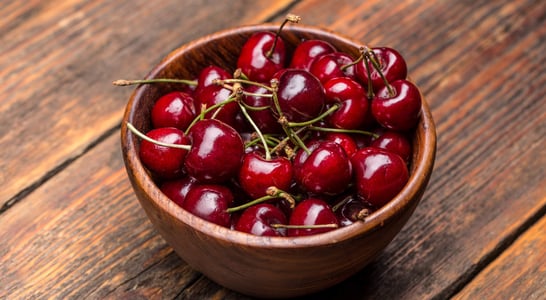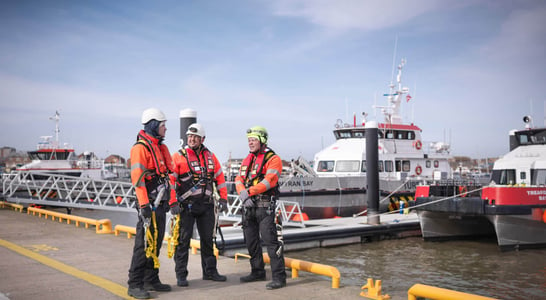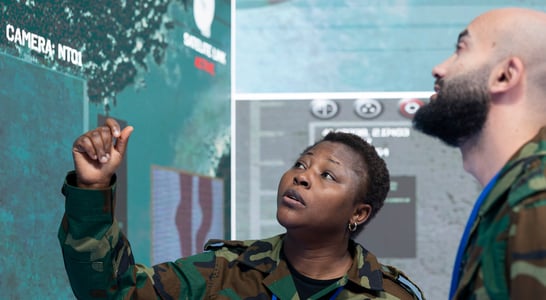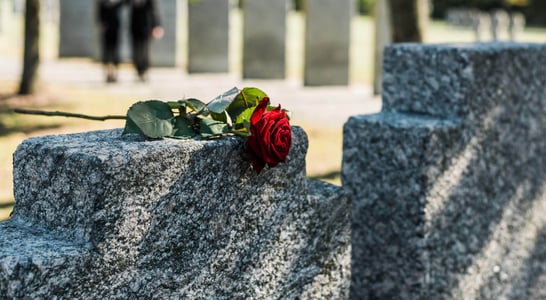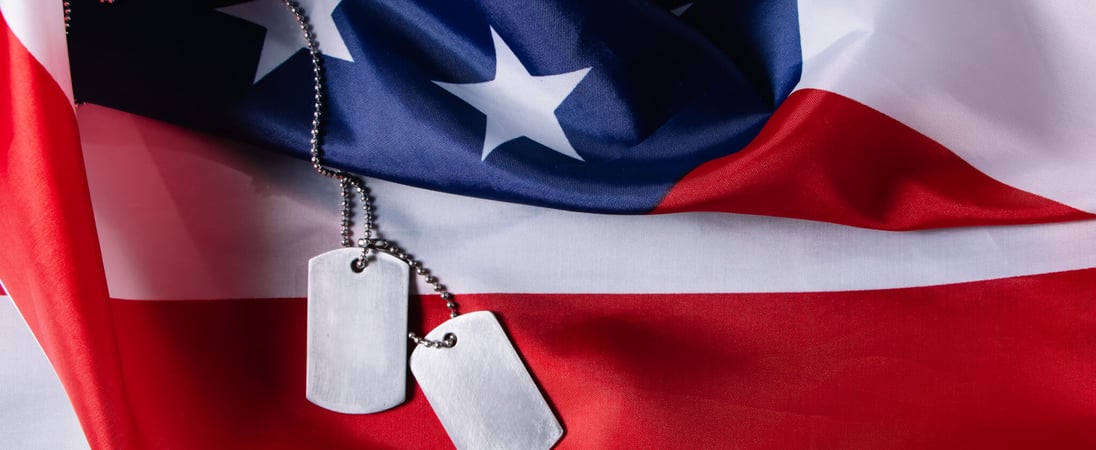
National Atomic Veterans Day
Dedicated individuals who bravely served, witnessing historic events with lasting impact. Their sacrifice and contributions resonate, inspiring gratitude and remembrance.
When scientists discovered that hidden energy inside atoms could be harnessed in order to create energy and power, they likely had no idea the kind of hazards to which they were exposing the world.
As the end of World War II grew near and the first nuclear weapons were tested and detonated over the next couple of decades, hundreds of thousands of people became victims of exposure, from innocent citizens to scientists to military personnel. With the experience of serious cancers and other medical problems, many of the people who carried the burden of being near these nuclear weapons were military service personnel.
National Atomic Veterans Day is here to show appreciation for and honor these men and women who served their country and, in doing so, sacrificed not only their time and service but also their life-long health.
History of National Atomic Veterans Day
The start of National Atomic Veterans Day can be traced back to 1983 when US President Ronald Reagan dedicated this day to those Americans who served in the military and led out in the technology of nuclear warfare and atomic weapons. The day was set to mark the anniversary of the first detonation of a nuclear weapon during the Trinity test, which occurred in New Mexico, on July 16, 1945 as part of the top secret Manhattan Project near the end of World War II.
Between 1945 and 1963, hundreds of thousands of service men and women witnessed or participated in the more than 200 nuclear weapons tests that took place during the Cold War, as well as those who served near Hiroshima or Nagasaki. According to the National Association of Atomic Veterans, there have been up to 400,000 Americans who qualify as atomic veterans. In addition, atomic veterans also include service personnel from other countries such as Australia, UK, New Zealand, France and others.
Exposure to radiation in these situations has led to a wide array of health problems for these people and their families, not the least of which have been thyroid problems, tumors and deadly cancers.
One of the difficulties with completely understanding the impact of radiation on these service men and women is that they were sworn to secrecy for many years. For decades after their experiences, they were prohibited from sharing their stories – not only with their loved ones but even with their doctors when they fell ill. After an investigation headed up by US President Bill Clinton, this secrecy law was repealed in 1996, allowing individuals to tell their stories and also receive disability benefits.
In an effort to commemorate the dangerous and important service of these veterans who were instrumental in the development of the American programs for atomic and nuclear weapons, The Atomic Veterans Service Medal was established in 2022. This award recognizes the contributions and sacrifices made by these atomic veterans as military personnel performing their duties. Those who are eligible for medals can apply online for themselves or as next of kin for atomic veterans who are deceased.
Since its original proclamation by President Reagan, National Atomic Veterans Day has been celebrated each year, whether federally or in individual US states, to honor these service personnel who sacrificed so much.
National Atomic Veterans Day Timeline
1898
Pierre and Marie Curie discover radium
The discovery of radium, an ore of uranium, paves the way for atomic power to be harnessed. [1]
July 16, 1945
Nuclear test in New Mexico
As part of the Manhattan Project, Trinity was the codename for the first nuclear weapon detonation by the US army. [2]
August 1945
Hiroshima and Nagasaki are bombed
The US military drops two atomic bombs on Japan within three days of each other, ending WWII and making history as the only use of nuclear weapons during wartime. [3]
1983
First National Atomic Veterans Day is celebrated
Declared by US President Ronald Reagan, atomic veterans are acknowledged on this day. [4]
2022
Atomic Veterans Service Recognition Program starts
This program recognizes the service and sacrifice made by atomic veterans for the end of WWII and during the Cold War. [5]
How to Observe National Atomic Veterans Day
Looking for some interesting ways to observe and honor National Atomic Veterans Day? Check out some of these ideas for getting involved:
Thank an Atomic Veteran
Those who know one personally or are associated with a local chapter of veterans of any branch of the military can certainly take some time on National Atomic Veterans Day to show appreciation. It’s a great time to say ‘thank you’ to those who have sacrificed in this way, especially when the world was ignorant about what the consequences would be. Perhaps visit with a veteran and ask them to tell some stories about their time serving in their various capacities and then let them know how much their service means.
Nominate an Atomic Veteran for a Medal
Those who know former US military personnel who qualify as an atomic veteran can certainly make it known to them about the opportunity to receive The Atomic Veterans Service Medal. Because it was initiated so recently, many older people may not be aware of its existence, or perhaps they could use help making the online application to receive it. Next-of-kin family members of deceased atomic veterans can also apply to receive the medal on their behalf. Get more information at the US Department of Defense website.
Learn Important Facts About Atomic Weapons
Observe National Atomic Veterans Day by learning about and sharing different facts about nuclear warfare. Consider some of these important facts around the topic of atomic weapons:
-
The nine states that hold nuclear weapons (Russia, US, China, France, UK, Pakistan, India, Israel and North Korea) put the populations of the entire world at risk.
-
Nuclear weapons waste public resources that could be used for other important needs. The total bill in 2022 was almost $83 billion!
-
In 2017, a large percentage of the world’s countries rallied together in order to adopt the United Nations Treating on the Prohibition of Nuclear Weapons, which went into effect in 2021.
-
The total number of nuclear missiles built from 1951 to the present is approximately 67,500 worldwide.
Speak Out Against Atomic Weapons
An excellent way to show appreciation for those who sacrificed their health and well-being might be to learn more about the dangers and hazards of nuclear weapons, and then actively work against their use going forward. Even in these years past the Cold War, as tensions rise between modern-day governments, the threat of nuclear warfare is always looming on the horizon.
Take a stand against the use of nuclear weapons by petitioning local and federal government representatives, all the way up to the President of the United States. Change.org is just one of many places where people are collaborating together to present their desire for a peaceful, non-nuclear planet. The International Campaign to Abolish Nuclear Weapons is another helpful resource.
National Atomic Veterans Day FAQs
How many atomic veterans are there?
Records indicate that at least 400,000 US veterans were affected, with approximately 200,000 or more who are alive today. [1]
What is the compensation if you are an atomic veteran?
Those who served in the US military as atomic veterans may be eligible for up to $75,000 in government compensation and/or disability benefits.
What defines an atomic veteran?
The definition of an atomic veteran includes factors such as serving in above ground nuclear tests from 1945-1962; participating in military activity in Hiroshima or Nagasaki before 1946; or being held as a POW in certain cases.[2]
What country are atomic veterans from?
Atomic veterans can be from many countries, including the US, UK, Australia, New Zealand, China, France and Russia.
How to apply for the Atomic Veterans Service Medal?
Information about applying for this service medal can be found through the US Defense Threat Reduction Agency.[3]
Also on ...
View all holidaysFresh Spinach Day
Grow your muscles like Popeye and boost your overall health by incorporating fresh spinach into your diet, from salads to smoothies to sandwiches.
National Hot Dog Day
Sink your teeth into a juicy, savory, grilled delight that's perfect for any occasion. It's the ultimate comfort food on-the-go!
World Snake Day
If you have a pet snake, show them a little extra love and pampering. Help end the stigma around snakes, and see what you can do to help endangered species.
